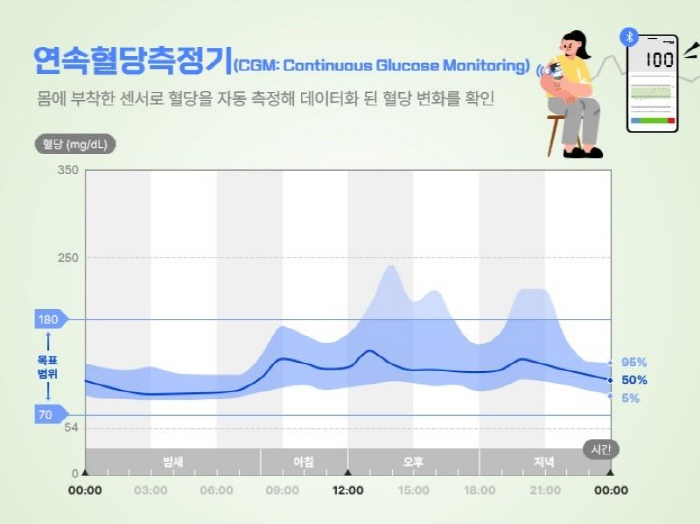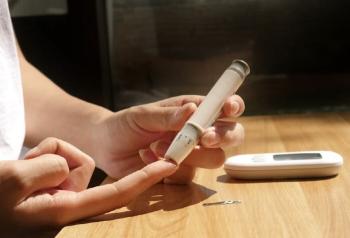In the era of 14 million people in the pre-diabetes stage, we need to find a way to manage blood sugar patterns in Himchan Hospital
Nov 12, 2025
|
According to the Korean Diabetes Association's announcement 'Diabetes Fact Sheet 2024 (Diabetes Fact Sheet in Korea 2024)', the number of diabetic patients over the age of 30 in Korea reached about 5.06 million (14.8% prevalence rate) as of 2022. Although they are not yet diabetic patients, the pre-diabetes population, which is heading for diabetes, is also about 14 million (41.1% prevalence rate).
Kim Yu-mi, director of the Department of Endocrinology at Himchan General Hospital in Incheon, said "Pre-diabetes means that blood sugar levels are higher than the normal range but have not yet progressed to diabetes"This means that it is the last step to prevent diabetes, so active management such as periodic tests and lifestyle improvements should be practiced."," he stressed.
◇ Pre-diabetes stage, 25% risk of progression to diabetes within 5 years
The pre-diabetes stage can be seen as a potential diabetic patient.
If properly managed, it may not lead to diabetes, but if the current lifestyle or blood sugar level is left unattended, there is a high probability that it will develop into diabetes. If ▲100-125 mg/dL of fasting blood sugar ▲ 5.7%-6.4% ▲ 140-199 mg/dL of blood sugar after meals, it is in the pre-diabetes stage. In this state, if glycated hemoglobin rises above 6.5% or blood sugar rises above 200 mg/dL after meals, it is diagnosed as diabetes.
According to the Korea Centers for Disease Control and Prevention, about 8% of the pre-diabetes stage progresses to diabetes every year. In the absence of special management, about 25% of patients transition to diabetes within 3 to 5 years. The problem is that many do not know that they are in the pre-diabetes stage, or think it is insignificant to know. It is often late to visit the hospital after blood sugar rises rapidly or complications occur.
Therefore, it is important to know exactly your blood sugar levels in the pre-diabetes stage. Knowing when and for what reason my blood sugar is rising can more strategically prevent diabetes. To this end, a continuous glucose monitoring (CGM) can be used to check changes in blood sugar in real time for 24 hours. A continuous blood glucose meter is a device that automatically measures blood glucose at regular intervals by attaching a sensor to an arm and transmits data to a smartphone app. As a method of continuously monitoring blood sugar levels without blood collection, one can check one's blood sugar response in real time according to daily activities such as eating, exercise, and sleep.
"Even if you eat the same food, your blood sugar response varies depending on your insulin secretion ability, insulin resistance, and food decomposition rate," Director Kim Yoo-mi said. "Continuous blood sugar measurements can help you identify which foods are dangerous for you, which exercise stabilizes your blood sugar, and come up with ways to cope with your daily life."
◇Losing weight and improving eating habits are essential...Exercise 3 times a week for more than 30 minutes
In the pre-diabetes stage, blood sugar management is the goal, and management and correction throughout lifestyle are necessary. The first thing to check at home is weight. More than 50% of diabetic patients in Korea are obese, so their weight is close to diabetes. If you are overweight, you aim to lose 5-7% of your weight.
It is recommended to eat in the order of vegetables, protein, and carbohydrates when eating. Not only does the amount of food naturally decrease due to fast satiety, but as vegetables and proteins are digested first, carbohydrates are slowly absorbed, and insulin is slowly secreted to prevent blood sugar spikes. Refined carbohydrates such as white rice, rice cakes, and bread raise blood sugar quickly, so they are replaced with foods rich in dietary fiber such as wholegrains, multigrain rice, and seaweed.
For exercise, it is effective to perform aerobic and oxygen-free exercises three times a week for at least 30 minutes. It is also helpful to make a habit of taking a light walk or walking exercise for 10 to 15 minutes after each meal. Blood sugar can be lowered by using glucose as an energy source at the time when blood sugar is highest after meals.
Lack of sleep promotes the secretion of stress hormones and worsens insulin resistance, so you need to secure 7-8 hours of sufficient sleep. Smoking and excessive drinking should be avoided as it interferes with insulin action and increases the risk of complications. If symptoms such as extreme thirst, increased urine volume, and weight loss appear, it may be a sign of diabetes, so it is better to visit a hospital for treatment.
|
This article was translated by Naver AI translator.















